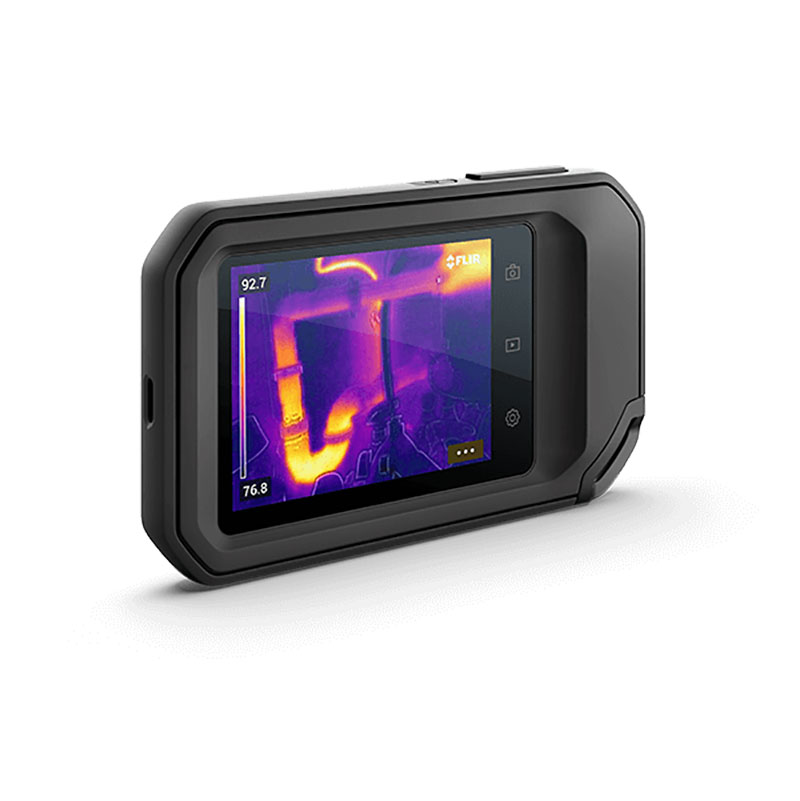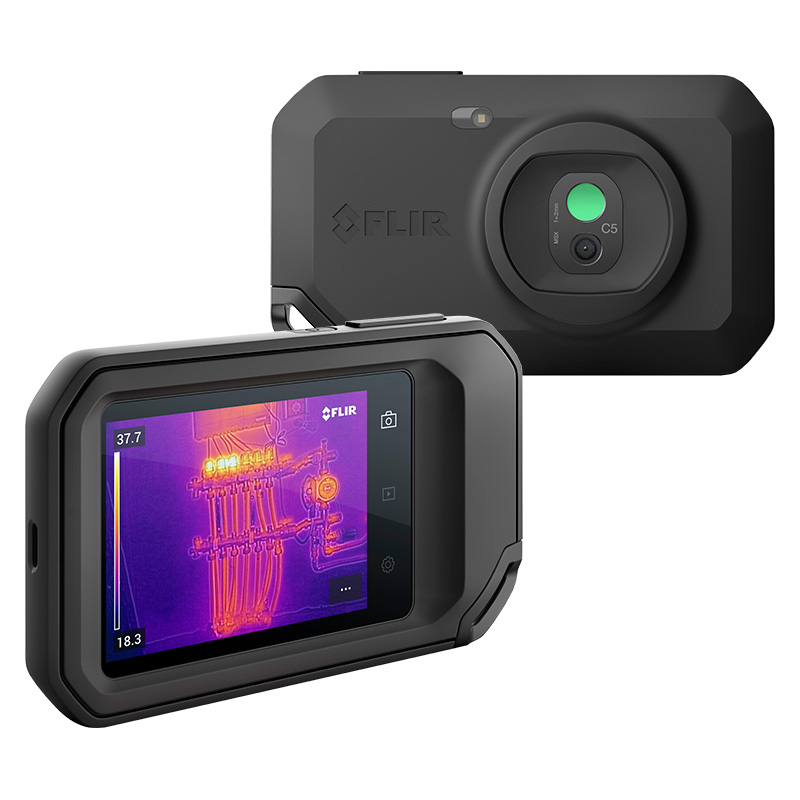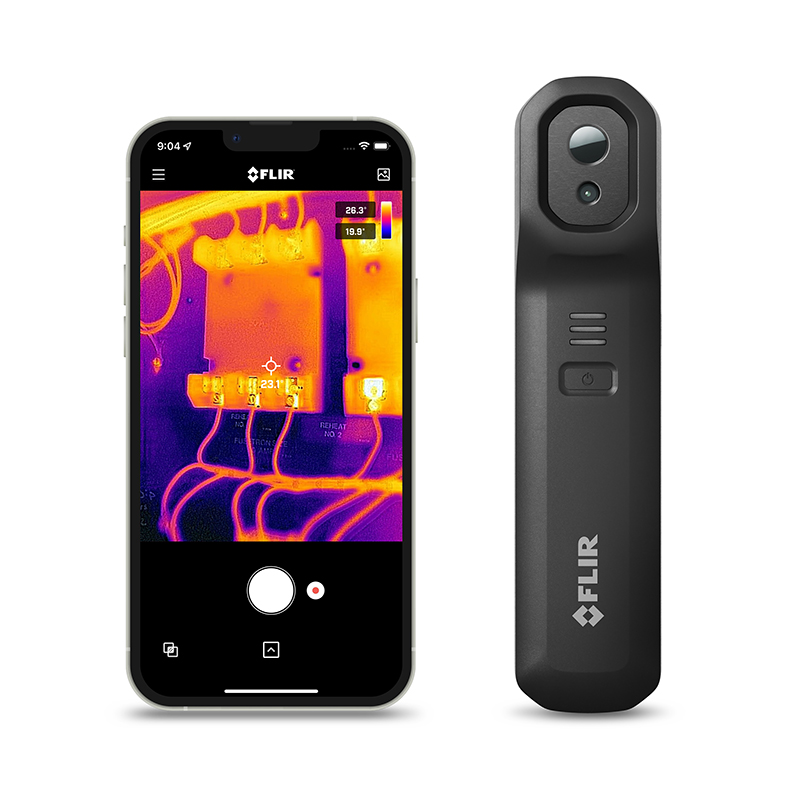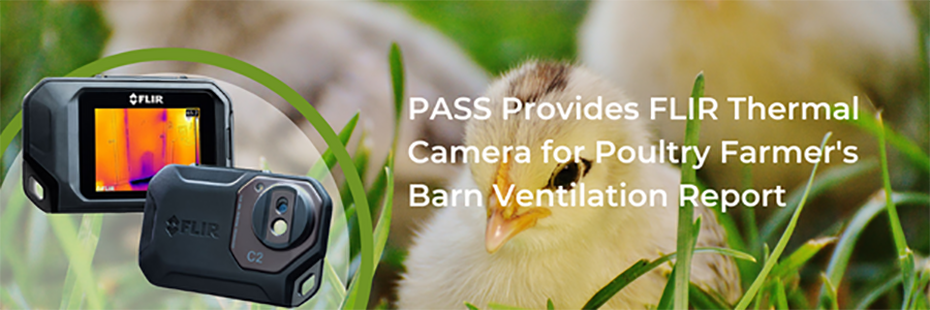
In 2016, PASS Ltd provided Devonshire-based beef and poultry farmer and recipient of Tesco’s Future Farmer Foundation Scholarship, Christina Hutchings, with a FLIR C2 Thermal Imaging Camera for her research into understanding ventilation to improve litter conditions in broiler houses. Now, that highly anticipated report, titled Where does all the water go? How a better understanding of ventilation can be used to improve litter conditions in broiler houses, has been published. In addition to detailing her in-depth investigations which Hutchings draws on to make several suggestions on improving barn ventilation, the report illustrates the critical role thermal imaging can play in farming.
Quick Links
- Meet the Author: Christina Hutchings
- Report: Where does all the water go?
- Report Impact
- A Note on the Featured FLIR Thermal Cameras
- Further Information
Meet the Author: Christina Hutchings
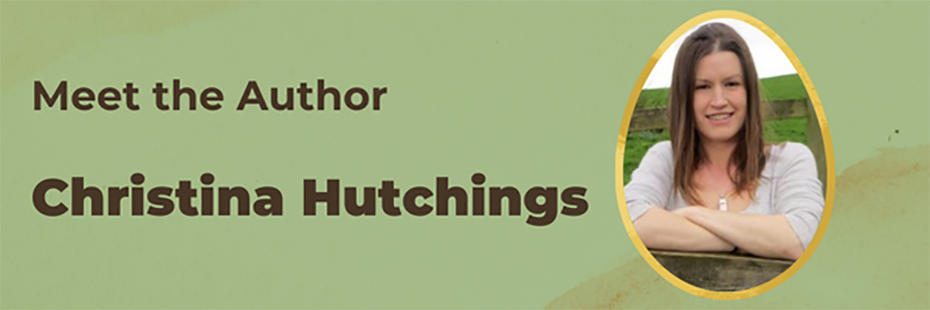
A beef and chicken farmer in Devon, Christina Hutchings was awarded a scholarship by Tesco in 2016 after completing a year of Tesco's Future Farmer Foundation. Hoping to produce a report that would be useful to other farmers, Hutchings chose poultry barn ventilation because:
“[I]t was something I [Hutchings] wanted to improve upon, and I know it is a subject other farmers could benefit from also. I also chose to stick to what I know and concentrate on broiler chicken houses and cold weather ventilation as this is the trickiest.”[1]
Report: Where does all the water go?
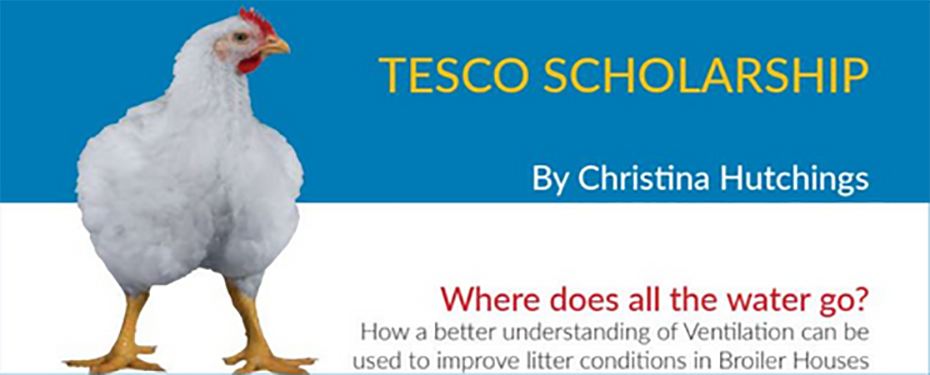
Published in 2020, Hutchings’ report centres on the vital role ventilation plays in regulating temperature and maintaining good air quality.
In her introduction, Hutchings explains that ensuring adequate ventilation in broiler houses is not only critical to the birds’ health and welfare, but to farmers’ yield and, ultimately, profits. Hutchings writes:
“Get your ventilation wrong for too long and things start to deteriorate and, if not improved, you get wet floors. Wet floors lead to hock burn and footpad dermatitis, poor air quality which can lead to other health issues and our birds are unhappy, their food consumption changes and our FCR (feed conversation ratio) can be affected; all of which can lead to rejects from the factory.”[2]
Poor management of farms and litter quality makes it difficult to produce economically viable birds and, more importantly, impossible to adhere to the Welfare of farmed animals (England) regulations’ five freedoms:
- Freedom from hunger and thirst
- Freedom from discomfort
- Freedom from pain, injury or disease
- Freedom to express (most) normal behaviour
- Freedom from fear or distress[3]
Report Conclusions and Suggestions
Using a variety of techniques, including thermal imaging, Hutchings proves the importance of good ventilation and uses her findings to draw several conclusions about ensuring best practices in this area:
“We must seal our houses as tight as possible and make sure we have adequate insulation levels in the ceilings and walls if we are to retain the heat.
We must have good quality minimum ventilation inlets (and overall system) and know how to manage them properly in order to get the best from them.
Have enough heat and don’t be afraid to use it - well distributed heat that is available throughout allows us to carry out good minimum ventilation rates, removing stale air and moisture without chilling the birds.
We need to run our minimum ventilation fans on an on/off cycle timer and not on continuously in order to control moisture and RH in the house. If you do not have enough minimum ventilation in your house the RH will creep up and up until the moisture ends up being dumped back on the floor making your litter wet.”[4]
Use of Thermal Imaging in Broiler Farming
As part of her project, Christina Hutchings used a FLIR C2 Thermal Camera supplied by PASS Ltd to evaluate the tightness/insulation of poultry houses. With the FLIR C2, Hutchings could identify areas where cold draughts were entering the barn, such as through leaky doors, as well as where cold, damp patches had formed as a result of condensation landing on litter. Hutchings writes in her report that thermal imaging is, in her opinion, one of the best ways to locate leaks.[5] She explains that:
“[Thermal] imaging is really useful for all sorts around the farm. It was great for checking the temperature of the floors, walls, and incoming air from inlets as well as locating draughts.”[6]
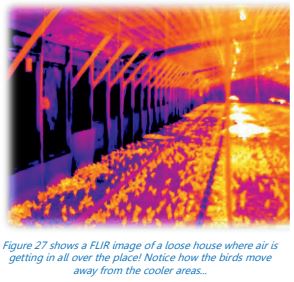
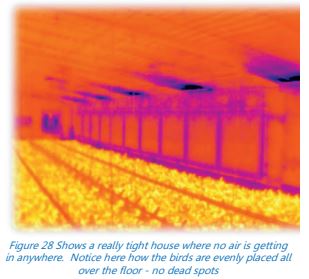
Later in the report, Hutchings reiterates her enthusiasm for thermal imaging and the role it can play in ensuring adequate insulation around broiler houses:
“Thermal imaging is a superb way to check your house for leaks and ensure air is going to the correct places.”[7]
Report Impact
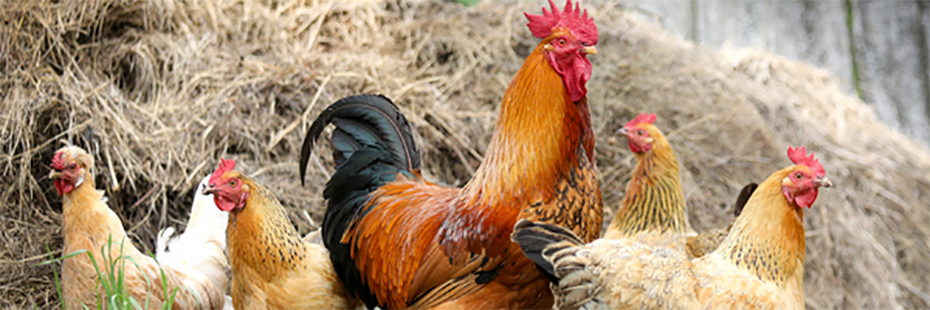
Across the UK we consume one billion chickens a year; that’s an incredible 17 000 chickens every nine minutes! It’s also a lot of birds to look after. Like all industries, poultry farming has not escaped the energy and cost-of-living crisis. The Guardian's podcast, Today in Focus, reports that the biggest overhead for poultry farms is chicken feed, which makes up approximately 70% of their overall costs. Guardian reporter Simon Usborne goes on to tell listeners that, as of April 2022, the price of chicken feed has increased by 15%. This staggering additional outlay is only made worse by rising energy prices, making it even more expensive to heat broiler barns.[8]
In a climate of increasing expense, Christina Hutchings’ report provides several welcome pointers on optimising broiler barns and the conditions inside. These will not only improve animal welfare but ensure economically viable birds. Furthermore, suggestions such as using thermal cameras to identify cold air leaks and damp patches offer inexpensive solutions to drains on resources. A well-insulated, dry barn will require less energy to heat, reducing utility expenditure, as well as carbon emissions.
Currently, poultry farming has a very low carbon footprint: it is similar to that of olive oil production and is just one-tenth of the carbon impact of beef farming. However, calls for better animal welfare could jeopardise this; while improved conditions are fantastic for the chickens, it would increase demands on land, feed, and heating, ultimately resulting in greater carbon emissions.[9] As mentioned, ensuring barns are tight and therefore energy efficient, as Hutchings advises, reduces the energy required to maintain a suitably warm environment. In turn, this has the potential to limit increases in carbon emissions without compromising animal welfare.
A Note on the Featured FLIR Thermal Cameras
Throughout her report, Hutchings makes reference to the FLIR C2 Thermal Camera, a small, handheld thermal imager that she used to conduct her research, as well as the FLIR One Thermal Camera, an economic thermal smartphone attachment that she recommends to fellow farmers. It is important to note that since Hutchings began her project in 2016, the FLIR C2 and FLIR One have been superseded by the following models.
Teledyne FLIR C3-X Compact Thermal Camera
Replaces FLIR C2 Thermal Camera
- IR Res: 128 x 96px
- Thermal Sensitivity: 70mK
- Temp Range: -20°C to +300°C
- Accuracy: ±3°C/3%
- Built-in 5MP digital camera
- MSX imaging mode
- Integrated torch
- 3.5" touchscreen display
Price: £509 (ex VAT)
Teledyne FLIR C5 Compact Thermal Camera with Wi-Fi
Replaces FLIR C2 Thermal Camera
- IR Res: 160 x 120px
- Thermal Sensitivity: 70mK
- Temp Range: -20°C to 400°C
- Accuracy: ±3°C/3%
- Built-in 5MP digital camera
- MSX imaging mode
- Integrated torch
- 3.5" touchscreen display
Price: £669 (ex VAT)
Teledyne FLIR One Edge Pro Thermal Smartphone Module
Replaces FLIR One Thermal Module
- IR Res: 160 x 120px
- Thermal Sensitivity: 70mK
- Temp Range: up to 400°C
- Accuracy: ±3°C/5%
- MSX imaging
- Supports iOS & Android
- Clips onto your smartphone
- Battery life: 1.5 hours
Price: £479 (ex VAT)
Further Information
Christina Hutchings' full report can be found here. She has also provided a range of helpful infographics for poultry farmers; please click to download these images.
Read: Where does all the water go? How a better understanding of ventilation can be used to improve litter conditions in broiler houses
For more help or advice regarding any of our thermal cameras, please don’t hesitate to contact our Sales team on 01642 931 329 or via our online form. In the meantime, our entire range of thermal cameras, including Teledyne FLIR’s C3-X, C5, and One Edge Pro models, can be viewed here.
[1] Christina Hutchings, Where does all the water go? How a better understanding of Ventilation can be used to improve litter conditions in Broiler Houses (2020), p. 4, last accessed 17 January 2023
[2] Hutchings, Where does all the water go?, p. 4
[3] Hutchings, Where does all the water go?, p. 5
[4] Hutchings, Where does all the water go?, p. 63
[5] Hutchings, Where does all the water go?, p. 37-8
[6] Hutchings, Where does all the water go?, p. 49
[7] Hutchings, Where does all the water go?, p. 54
[8] The Guardian, ‘The real cost of the chicken in your supermarket trolley’, last accessed 17 January 2023
[9] The Guardian, ‘The real cost of the chicken in your supermarket trolley’


